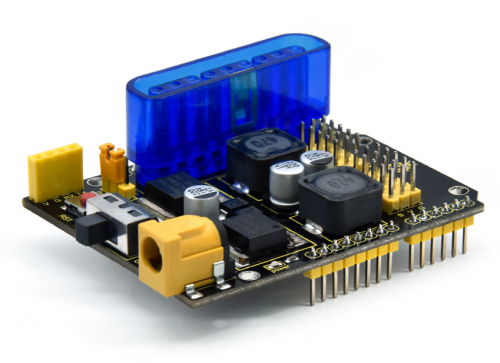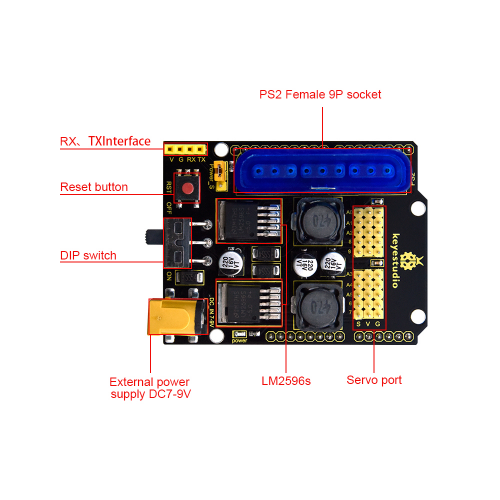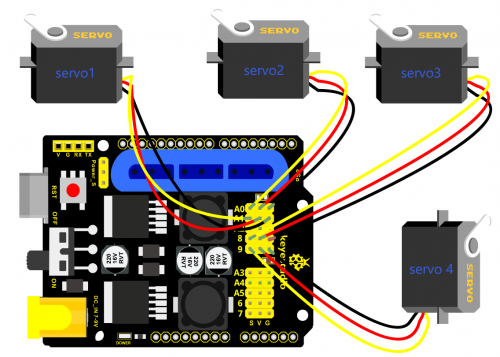KS0550 Keyestudio Servo Driver Expansion Board(Black and Eco-friendly)
Jump to navigation
Jump to search
Description
This is an Arduino servo driver shield. It has a PS2 interface for using a PS2 handle control. It contains 10 IO interfaces used to connect servos or other sensors. in addition, we have also extended RX/TX interfaces to interface with serial communication modules like BT modules. There are two LM2596 voltage regulator ICs onboard, which can provide a stable 600mA current for each servo.It is also applied to mechanical structures such as robotic arms.
Specification
- Input voltage VIN: DC 7-9V
- Input current VIN: maximum 5A
- Output voltage: 5V
- Output current: max 3A
- Voltage regulator IC: LM2596S
- Frequency: 150kHz
- PS2 interface: PS2 female 9P socket
- Working temperature: 0~50
- Size: 73*53.34mm
Pin-out
Wiring Diagram
Test Code
#include <Servo.h>
Servo myservo1;
Servo myservo2;
Servo myservo3;
Servo myservo4;
int pos1 =0;
void setup()
{
myservo1.attach(A1);
myservo2.attach(A0);
myservo3.attach(8);
myservo4.attach(9);
myservo1.write(0);
myservo2.write(0);
myservo3.write(0);
myservo4.write(0);
delay(1000);
}
void loop()
{
for (pos1 = 0; pos1 <= 180; pos1 += 1) { // from 0 to 180
myservo1.write(pos1); // servo 1 rotates to pos1
myservo2.write(pos1); // servo 2 rotates to pos1
myservo3.write(pos1); // servo 3 rotates to pos1
myservo4.write(pos1); // servo 4 rotates to pos1
delay(10); //control the speed of servos
}
for (pos1 = 180; pos1 >= 0; pos1 -= 1) { //from 180 to 0
myservo1.write(pos1); // servo 1 rotates to pos1
myservo2.write(pos1); // servo 2 rotates to pos1
myservo3.write(pos1); // servo 3 rotates to pos1
myservo4.write(pos1); // servo 4 rotates to pos1
delay(10);
}
}
Test Result
Stack the driver board onto the control board, wire up and upload the code. Four servos rotate from 0° to 180°, then from 180° to 0°


